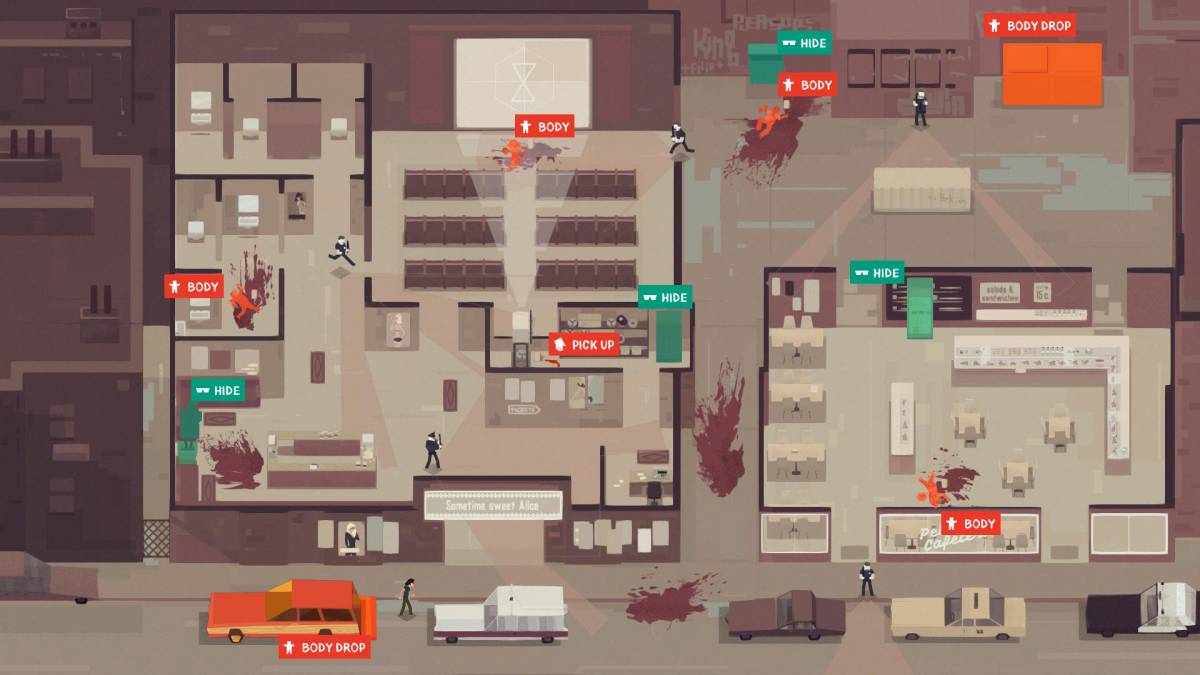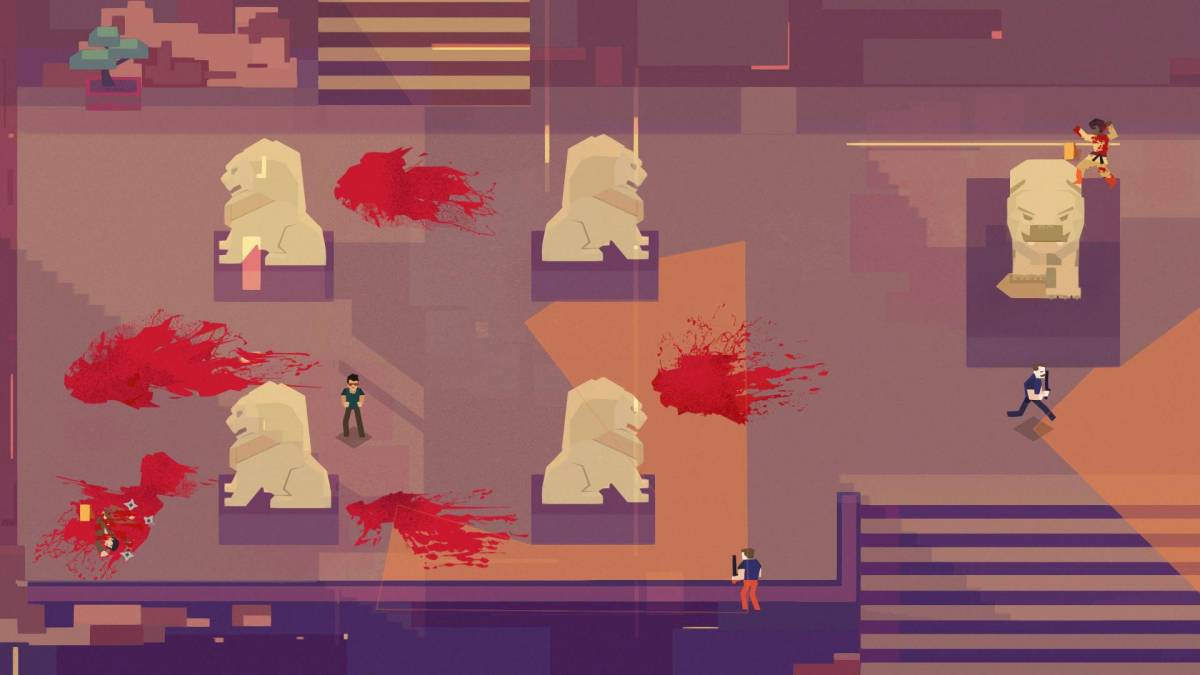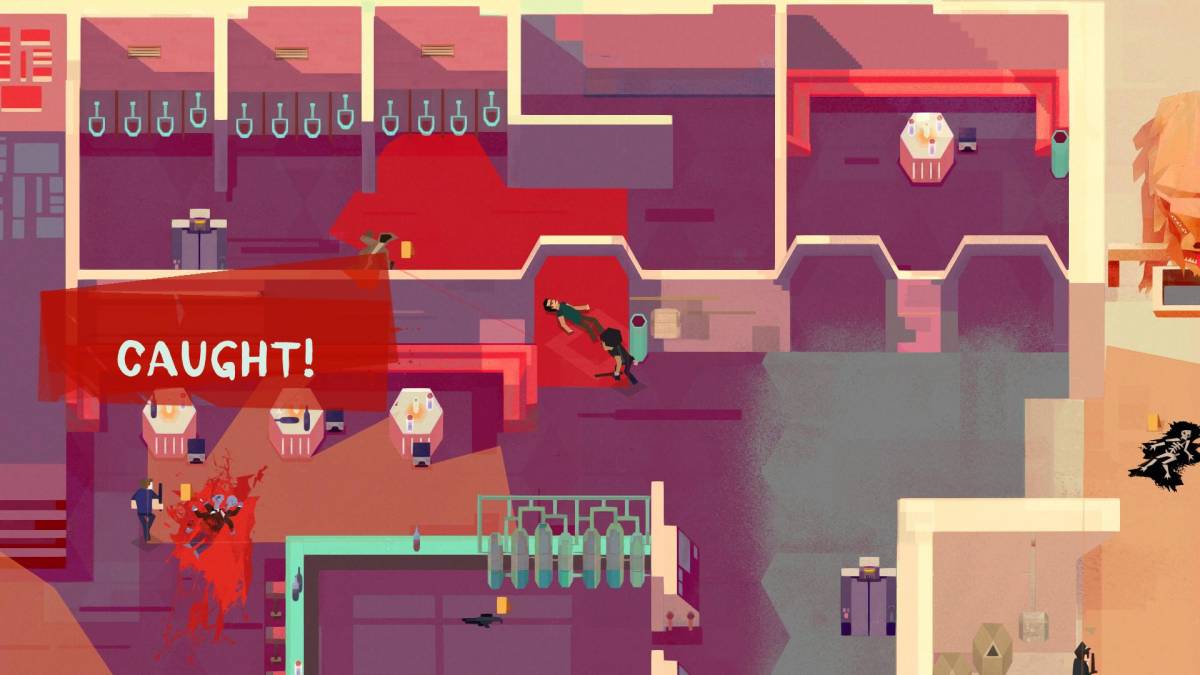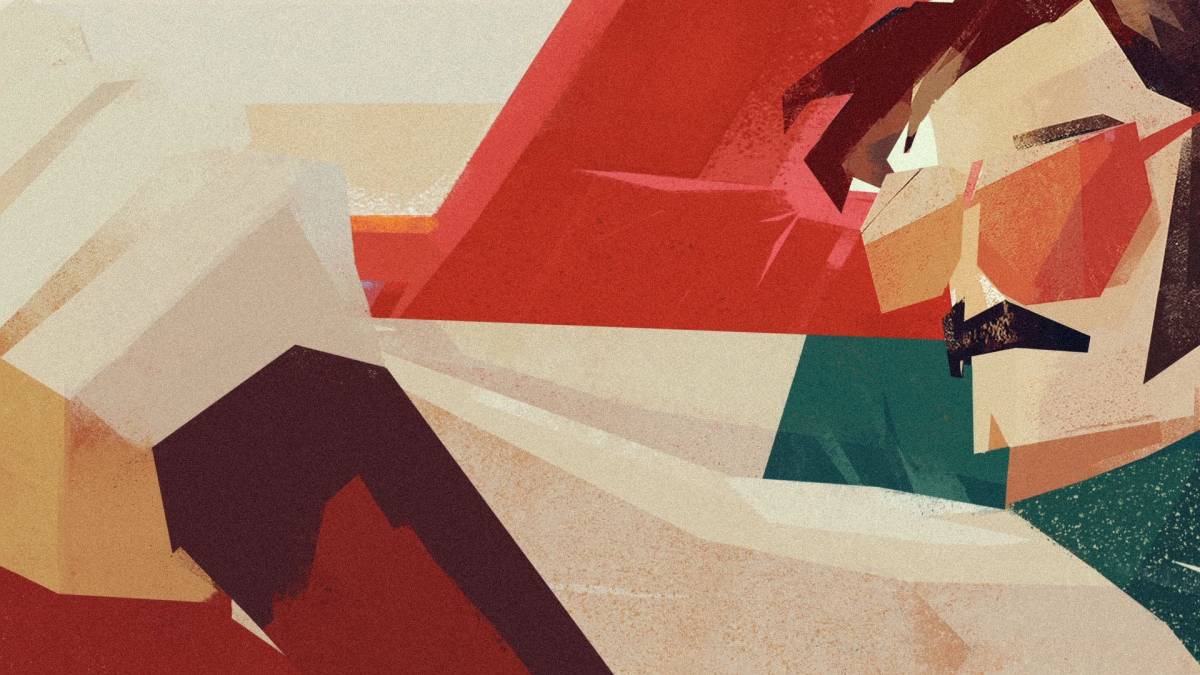I’ve been trying to think of an elevator pitch for Serial Cleaner but the best I can come up with is “the thing that happens after a Hotline Miami mission”. Admittedly, it’s not very catchy, but it succinctly sums up my first impressions of Serial Cleaner.
The thing is, I don’t want to harp on about any comparisons between Serial Cleaner and the Hotline Miami games. They are both top-down titles that rely on the player being particularly skilful, albeit one game focuses on murder, and the other on the cleaning after a murder.
You play Bob Leaner – referred to in game as ‘The Cleaner’, who receives telephone calls from nefarious folk, asking him to go and clean various murder scenes. By the time you get to each mission, the cops are already searching the area, their line-of-sight represented in Metal Gear Solid-esque vision cones, and you must navigate each area, collecting bodies and evidence and, oddly, hoovering up blood stains. If you’re spotted, the police will pursue you and, when caught, you fail and must restart.

Serial Cleaner shares a similar narrative structure to Hotline Miami. Each mission is segmented by time spent at the home Bob shares with his mother where they talk about and watch boxing. It’s a nice way to splinter his gritty and illegal work with his wholesome home life and highlights that, when not hoovering blood and shifting corpses, he is a nice guy. The house also acts like a hub, serving mainly as a place to receive telephone calls for new jobs and view your ‘trophies’, which are essentially visual cues to previously completed missions. The newspaper thrown on your porch fleshes out the consequences of the crimes you’ve helped clean-up; reading that the local newspaper has a new editor-in-chief the day after you’ve cleaned blood of the floor in the local newspaper office demonstrates connectivity between what you do and what happens in the world you inhabit.
It’s the type of game that requires mastery of level-design, where the reward and gratification comes from remembering the enemy search patterns and where each piece of evidence and body are. The thing is, the game randomises the location of objectives each time you’re caught, meaning that when you restart a mission, you must reevaluate your approach. This isn’t necessarily bad, and seems to stem from a desire to keep the gameplay challenging over its short length, but it can deprive you of that sense of mastery of each level.

Level design is also good as they become larger, more intricate and feature more cops and obstacles as the game progresses. Serial Cleaner introduces its main features as the game progresses. You can move obstacles like cars and dumpsters to block and divert guard patrols. Speaker systems can be activated to draw a stationary guard from their position. Activating your ‘cleaner sense’ zooms out to give you a lay of the land to assist your approach, show your objectives and hiding places.
Despite the advancement of level design, I found Serial Cleaner to be easier than I expected. There is a huge margin for error and, as a result, this allows you some breathing space. However, this is also in part due to the AI, which can be a little bit hackneyed at times. Guards will react to the removal of evidence and bodies but only momentarily. After a few seconds of standing about looking confused, they will return to their prescribed search patterns. I understand that stealth tropes are in place for a reason -mostly, balance- but the fact that their searches do not intensify the more objectives you remove makes the game seem flawed. Conversely, guards do not react or notice when you’ve hoovered up blood. A slight niggle and by no means detrimental, but it highlights an inconsistency towards AI programming.

Visually, Serial Cleaner nails the aesthetic of the 1970’s, being the period in which the game is set, and uses an autumnal colour palette of pinks, browns and oranges within the level design. It has that stereotypical 70’s vibe which is enhanced by a funky score. The music which plays over the title screen made me think of the iconic Shaft theme, so that should give an idea of what they’ve done regarding the music.
Once you’ve completed the main game, there are a selection of bonus outfits and levels belonging to the era, including one set in a Star Wars themed bar. This does incentivise a few replays to unlock all the bonus features but after the five-hour campaign is finished, it’s hard to argue a strong reason to return. That said, this is a game that costs £11.99, so content-wise, it offers enough for that price tag. Just don’t expect a whole lot of bang for your buck with this one.
Review copy provided
Some of the coverage you find on Cultured Vultures contains affiliate links, which provide us with small commissions based on purchases made from visiting our site.

